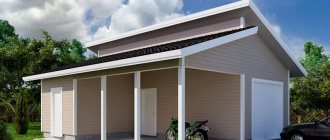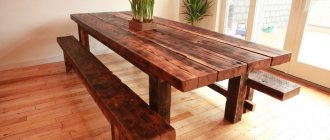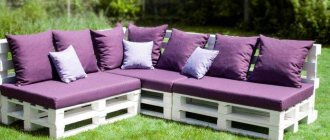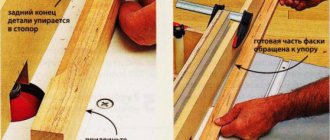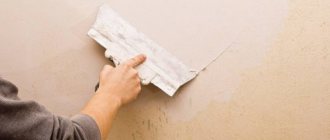In the modern world, every person strives to make the interior of a house or apartment special, adding an original twist. That is why the florarium (plant terrarium) is very popular. It's easy to do it yourself.
This process is creative and requires some skills, patience, financial costs and time. But such decor, made with your own hands, will give real aesthetic pleasure. Regardless of the time of year, you will always have a small home greenhouse that does not require much maintenance. We offer some tips on how to make a florarium with your own hands for beginners.
Types of florariums
Before moving on to step-by-step instructions on how to make a florarium with your own hands, a novice florist should understand what types of compositions exist and what their distinctive features are. The models of florariums are extremely diverse, not to mention the many options for placement and basic rules for selecting plants.
The creation of any florarium should begin with the decision of where exactly the future composition will be placed. The future florarium can be placed in an aquarium, various decorative vases, tall large glasses, decorative glass jars, even laboratory flasks and bottles can be used.
If you decide to create a florarium with your own hands, then the best option for placing the composition will be an aquarium, since plants naturally require appropriate care and lighting. And in an aquarium there are two important elements that can provide both - a lid and a light.
A vase for a florarium, of course, will not provide the plants with the necessary light or air, but the composition will look much more aesthetically pleasing. Perhaps you just have an unnecessary and outdated bowl for sweets or candies in your closet - it’s time to find a new use for it.
But the most difficult option for decorating a florarium with your own hands, of course, has been and will be bottles of different sizes and laboratory flasks.
However, no matter what option you choose for placing a flower arrangement, it is important to remember one thing - the beauty of your product will depend not only on the vessel, but also on how harmoniously the plants inside are arranged.
Magic garden behind glass - do-it-yourself florarium from A to Z
Miniature gardens behind glass seem like toys, but these are real living plants. Do you want the same one? Nothing could be easier!
Tired of growing indoor flowers the old fashioned way in pots on the windowsill? Try creating a mini-garden in any suitable glass container. Such plants look more impressive, do not take up much space and do not require much time. You've been eyeing mini-gardens for a long time, but don't know where to start, this guide on how to make a florarium with your own hands will help you. But first, take a closer look at the features of this hobby.
- What is a florarium
- What are the advantages of growing mini gardens?
- What you need to create a florarium
- Which plants are suitable for growing behind glass?
- How to create your first florarium
What is a florarium
Since the time of the great geographical discoveries, people have been so impressed by the exotic flora of hot countries that they began to build winter gardens in our latitudes. Only the nobility could afford such a hobby, because not only did the plants themselves cost a lot of money, but impressive greenhouses also had to be built for them. The times of princes and spacious estates are over, but the craving for beauty remains. This is how the idea of florariums - gardens in small glass containers - was born.
In small apartments, a florarium will be a worthy replacement for bulky greenhouses. Thanks to the closed space, it maintains a special microclimate favorable for the growth and development of many plants. Behind glass you can recreate a piece of tropical forest, rocky or desert landscape.
It all depends on your taste and experience. Here it should be noted that different types of florariums require different preparation from their owners. For example, even a beginner who has never kept indoor plants before can master a florarium made from succulents. But creating a tropical forest will require some experience in this matter.
What are the advantages of growing mini gardens?
If you ask such a question to an ardent lover of indoor plants, we will get the obvious answer: “Because I like it!” So all the arguments in favor of a florarium are intended for those who want to take the first steps in creating mini-gardens.
- It is beautiful! A glass vase filled with living plants and decorative elements - pebbles, snags, figurines - looks unusual and stylish. Any interior will benefit from such decor.
- This is interesting! Caring for and observing a small ecosystem will be interesting for both adults and children. Usually the mother grows beauty, and the children and the rest of the household admire the result.
What you need to create a florarium
And you won't need much. Half of what you need can be found at home, and the other half can be bought at flower and pet stores. So, let's stock up:
- Glass container . The choice is great. You can buy ready-made, but not always cheap, containers - a special flowerpot, a round or goblet-shaped aquarium. You can assemble a house for plants with your own hands, but you can’t do it without a man’s help. And you can adapt everything that is available to your needs - jars, large glasses, pot-bellied bottles, vases.
- Drainage - expanded clay, sandstone, pebbles. You will need a lot of it, because in a closed container the excess water has nowhere to go. Abundant drainage will prevent the roots from turning sour.
- Activated carbon . It absorbs foreign odors and helps the soil stay fresh. It is usually used in tropical florariums.
- Substrate for plants . Succulents will need a light sand mixture, orchids will need a special soil based on tree bark, and the rest of the plants will need regular flower soil.
- Plants . The main condition when choosing plants is that they should be small and, preferably, slow-growing.
- Decorative elements . Beautiful pebbles, colored glass, moss, driftwood, ceramic or plaster figurines. Everything that seems beautiful to you and worthy of being added to the overall composition.
- Tools . It is most convenient to plant plants in a florarium and care for them using special devices. For planting in hard-to-reach containers such as a bottle or vase, a surgical clamp is ideal - it is convenient for them to fix the plant. If you don’t have such luxury, then regular large tweezers, Chinese chopsticks or knitting needles will come in handy. It is convenient to compact the soil with a wine cork or a school eraser pinned onto a knitting needle. For watering, a spray bottle, a small watering can or a medical bulb are suitable.
Which plants are suitable for growing behind glass?
Whatever plant you place under glass, it will begin to actively grow and develop there, because increased temperature and humidity are favorable for most green residents. But many plants like these conditions so much that they begin to go wild and over time fill the entire space, and soon they completely crawl out of the container.
To prevent this from happening, plants for the florarium must be selected with special care. For beginners, succulents would be an ideal option: Crassula, saxifrage, agaves. They grow very slowly and do not require difficult conditions. With their help, florariums are created with a desert or rocky landscape.
For tropical forests in a jar, small bushes of tradescantia, begonia, chlorophytum, phytonia, and pilea are suitable. These plants are prone to active growth, so tradescantia and begonias will have to be regularly pinched off the growing point, and plants such as chlorophytum will have to be completely replaced with new ones.
Orchids are considered the most difficult to care for. For their maintenance, spacious florariums are made with lighting and a ventilation system. For small containers, only species with short peduncles such as lady's slipper are suitable.
How to create your first florarium
So, it's time to make your dreams come true! Let's start with the simplest succulent florarium. You will need:
- A small round aquarium or jar.
- Drainage – it is better to use expanded clay, it retains moisture well.
- Soil for succulents or a mixture of garden soil, leaf soil and sand.
- Sand, small and large pebbles for decoration.
- A small bush of saxifrage and two bushes of crassula.
The container will have to be washed thoroughly and during planting, act carefully so as not to cover the walls with soil. A quarter of the volume of the jar needs to be covered with expanded clay, and on top with a layer of earth of about 5-7 cm. Now it’s the turn to plant the plants. Use a sushi stick to make a hole in the ground and use a watering can or pear to pour some water into it. The bush is carefully placed in the hole with tweezers and held.
With the other hand, using a stick, straighten the roots and cover them with soil. The rest of the plants are planted in the same way. Cover the entire surface with a layer of pebbles or sand. At this stage, you can show your imagination - make a pattern from multi-colored pebbles, put larger stones in the background, imitating a rock.
The whole job will take about 15-20 minutes. At first, the bushes are watered more often, then watering is reduced. It is convenient to do this with a small watering can with a long spout. You should not feed the plants, otherwise the composition will grow very quickly.
That's all. Your first florarium is ready. All that remains is to place the house with plants in a bright place in the living room or cozy bedroom and admire its laconic beauty. Caring for a florarium is even easier than caring for the most unpretentious indoor plants, so don’t give up on a mini-oasis, even if you consider yourself lazy.
Author: Oksana Kirichek, especially for the online magazine “Women’s Hobbies”.
How to arrange a florarium
Choosing a container for a florarium is just the beginning. No less important will be the choice of location of the composition in space. The most popular option for placing a florarium is some kind of flat surface. In an apartment, this could be a table or a window sill. But it happens that there is very little space, then the best way out would be to mount a mini-florarium on the wall. You can also hang the composition from the ceiling.
What is a florarium
As a rule, florariums are made of glass or dense, translucent plastic; there are also completely wooden models or combined ones with transparent inserts. Unlike a terrarium, a florarium necessarily has a narrowed entrance hole at the top or side to ensure a microclimate inside the container. Often this hole is completely covered with a lid. Special containers for growing plants are used, as well as all kinds of glass bottles, jars with lids, large wine bottles, bowls with a narrowed hole, and laboratory flasks.
The main purpose of the florarium is to maintain a more or less stable level of humidity and temperature, like in a greenhouse. Special equipment for heating and lighting can make the florarium independent of the source of natural light and heat. All this allows you to grow the most demanding plants in a container, requiring certain conditions and care. If the florarium is completely closed, it is necessary to regularly ventilate it so that condensation does not accumulate on the walls.
For plant terrariums, rectangular aquariums, terrariums for turtles, snakes and other animals, round large vases, bowls, even ordinary glass cups or glasses are used. This option is also called a display florarium. Access to the plants here is open from above, which means you need to strictly observe the temperature regime, regularly water and spray, and avoid drafts if the plants need it.
Another important advantage of florariums is their compactness, which is especially important for owners of small apartments and small window sills, where there is not enough space for large flowerpots. Various plant compositions in the terrarium look very stylish and extraordinary, especially in comparison with standard pots with indoor plants.
It is worth remembering that no matter how slowly the plants grow, sooner or later they will become cramped in a small container. Then the flowers can be transplanted into pots, and the florarium can be filled with a new composition.
Filling the vessel
If we talk about step-by-step instructions, a florarium is created with your own hands in the following order: first of all, the container is filled, then the plants are selected, and only at the end the finishing touches are made to create a complete composition.
To start filling the vessel, you need to decide on the theme of the florarium, because the special atmosphere that is created in the container helps create any climate zone and any natural landscape. You can decorate your own florarium, for example, as a piece of the tropics by planting appropriate plants in it. Novice florists are most often advised to start by creating a desert landscape, since caring for such a florarium will undoubtedly be easier. Among the ideas for florariums, mountain landscapes and dense forests are also common. And of course, every florist can use their imagination and come up with their own unique landscape - there are no limits to the imagination here.
The nuances of composing compositions
It is better to start with small containers and plant no more than 5 specimens. Plants should be no more than 20 cm high and tolerate high humidity and lack of light.
A florarium with succulents can be open or closed, and each option has both advantages and disadvantages:
Pros of an open tank
- Access to the landing is not difficult.
- Air circulates freely.
- A microclimate is created to which cacti are accustomed.
Flaws:
- Air penetrates into the container, causing the temperature of the environment to decrease, which heat-loving vegetation does not like.
- As a result of access to oxygen, succulents grow quickly, requiring more frequent pruning.
- The structure needs strong fixation.
The closed design also has advantages
- Minimal watering is sufficient.
- The plants grow more slowly due to the fact that there is no access to air, which means they retain their decorative properties more.
- Maintenance is quite simple - occasional pruning and removal of dead foliage.
- High humidity and high temperature are what forest cacti need.
Minuses
- Moisture can accumulate in the soil, causing root rot. To avoid this, it is recommended to create a “double bottom” through which excess water will flow out.
Cacti, like most succulent plants, feel more comfortable in open containers. It is important to consider how fast they grow, especially when it comes to building a multi-level florarium. If the vegetation in the foreground quickly increases in size, blocking the remaining specimens, the composition will be disrupted.
Selection of plants
If we talk about the second step of the step-by-step instructions, a florarium is, of course, mostly a selection of plants. You should know that not all plants are suitable for florariums. If you have the opportunity and time, it would be best to attend a master class. A florarium is a whole microsystem, and at any master class, the first thing they will tell you about is the following:
- Since the rapid growth of plants in a florarium is difficult, it is worth choosing slow-growing species of flora. In the future, this will make it much easier for the owner to care for the composition. Although, in fairness, it is worth noting that any plant, finding itself in conditions of insufficient lighting, slows down its growth. As a last resort, you can resort to pruning the roots.
- When choosing several types of plants for a florarium, it should be taken into account that the conditions for their maintenance should be at least relatively similar.
- If you decide to opt for a desert landscape, then the best options would be cacti, aloe or milkweed.
- If you want to achieve the effect of a dense forest, then you will definitely need to get moss or fern. For example, for beginners, it will be easiest to lay a florarium with sphagnum moss, and choose maidenhair or pteris among ferns.
- Bright flowering plants are best if you want to create a tropical florarium. For example, such plants will include alocasia and violet. But when creating such compositions, it is important not to overdo it with the number of plants - no more than two or three species per vessel. Also, ventilate such a composition in a timely and efficient manner.
- If you like a mountain landscape, then the effect of such a climate is achieved using a combination of ivy and succulents.
- You can combine seemingly incompatible types of plants in one vessel using the following trick - various small pots with individual species are buried in the sand for the florarium, and then additionally disguised with pebbles or other decorative elements. Of course, caring for such a composition will be much more difficult, but when has beauty not required sacrifices from the creator?
Choosing plants for a florarium
To create a florarium, choose slow-growing plants. Succulents and cacti are suitable plants for beginning florarium growers, as they do not require special care. Popular among succulents are aloe, agave, spurge, and crassula; among cacti, astrophytum, prickly pear, rebutia, and notocactus. Common choices for florariums include calamus, moss, ferns, ivy, tillandsia, fittonia and flowering plants such as azaleas, violets, saintpaulias, cyclamens. You can clearly see which plants are suitable for eco-gardens in the video:
The most difficult plants to grow will be orchids. They need special care and love sufficient space, so large containers are used for florariums. Not only orchids, but also other plants for florariums require special care.
Materials for creating a florarium
Perhaps you have already decided on the general idea and know which plants you will need for the composition. So, all you have to do is close the question completely and make a florarium with your own hands?
First you need to collect materials for creation. For any florarium you will need to prepare:
- aquarium or other container;
- drainage components are what the “sole” of the future composition will consist of (for example, coarse sand, broken bricks or small pebbles);
- soil suitable for succulents;
- decorative elements - for example, colored sand or multi-colored pebbles, animal figures or shells of various shapes;
- tools for planting plants (if the neck of the container is wide enough, a standard planting set will do, but if the neck of the container is narrow, then you will need tweezers or tongs);
- To water the composition you will definitely need a spray bottle or syringe.
Soil for florarium
The preparation of soil for a mini-greenhouse begins taking into account the characteristics of the plant composition. It is advisable to have coarse sand and a plastic mesh in your arsenal to create drainage.
It’s even easier to purchase soil mixture for succulents or beautiful flowering plants at a gardening store. You can make your own soil by mixing equal proportions of purchased universal soil with calcined sand (the step-by-step process can be found on the Internet).
Sand
You cannot do without sand when making a soil mixture. They use river or lake water, only they are first washed and calcined in the oven to disinfect them from harmful microorganisms. Sand serves as drainage, improves soil structure, and allows air and moisture to reach plant roots.
The soil
It is advisable to choose soil with a neutral reaction for the florarium, but it all depends on the preferences of the plants. Reduce the acidity of the soil by introducing a handful of dolomite flour. Choose loose, breathable soil that allows new plantings to take root. In heavy soil, flowers become sick due to rotting of the roots and the accumulation of salts from the water during watering.
Stones
Often the finished composition is decorated with stones of different sizes. The material is found in the forest or picked up in a store, but in the first case there remains a risk of introducing infection and disease to the plants. Before working with forest stones, it is recommended to wash and disinfect the material with a solution of potassium permanganate.
Combined options and feeding
You can prepare a soil mixture by mixing turf and leaf soil with the addition of sand in equal parts. Plantings with thin roots are provided with more breathable soil, so brick chips or pebbles are introduced.
Succulents are contraindicated in the presence of brick pebbles, which are successfully replaced with vermiculite. For plants with thick roots, it is advisable to introduce some loam into the soil, for residents of rocky deserts - crushed stone. Fertilizers should not be added to avoid rapid growth of flowers.
Florarim in the form of a desert landscape
The easiest to create and maintain will be a florarium with succulents. Moreover, in the end it looks quite unusual and exotic.
To create such a florarium, take a wide flat container, for example, a glass vase for sweets. You also need to buy special soil for cacti - such soil can be found in any hardware store. You will also need to purchase the succulents themselves (do not neglect painted cacti - your composition will look brighter with them). As a decorative element, you can buy pebbles or expanded clay.
Before you start filling the vase, it should be thoroughly washed, dried and removed from grease. Next, the bottom of the vessel must be filled: one quarter with expanded clay and pebbles, the remaining three with soil. In total, the vessel should be filled to three quarters of its height. Cacti should be planted at a short distance from each other; succulents should not be buried low. After sprinkling small pebbles on top of the composition, you need to compact the soil with careful movements.
Florarium step by step
Creating a beautiful florarium requires careful attention to detail.
View this post on Instagram
Publication from Florariums Tiffany St. Petersburg (@florarium_minimir) May 4, 2020 at 4:59 PDT
Creating a composition
Any mini-garden primarily reflects the mood of the creator. There are several basic compositional styles, but there is no prohibition on mixing elements of different styles.
Basic compositional solutions:
- Desert and its variations . The basis of the composition is sand and stones. Small groups of succulents are planted in such florariums or the emphasis is on one plant.
- A tropical forest . This theme involves the formation of tiers and multi-layered compositions.
- Stone desert . A very laconic but interesting design that involves the use of mosses and other ground cover plants. The central point becomes a group of stones or a large cobblestone imitating a rock.
In pots or in the ground
Depending on the internal geometry of the florarium and the design style, some plants can be planted directly in the substrate , while others can be left in pots, fitting them into the composition or camouflaging them behind other plants.
Soil layer by layer
The emphasis in design can be shifted from plants to the ground. Fantastical layer-by-layer laying of sand and small stones allows you to deepen the overall composition.
In addition, layer-by-layer laying of soil solves another important problem - removing excess moisture from plant roots .
Possible variations of soil laying
Methods of laying soil directly depend on the plants that will inhabit the florarium.
- For succulents, you can pour a sand-stone mixture with a small addition of soil, and this will be enough. A rocky surface is suitable for mosses.
- Tropical florariums require nutritious, well-ventilated substrates. Therefore, when laying soil, you must first of all focus on the needs of the plants, and adapt effective design methods, spotted on the Internet, to them.
Florarium with orchids
At present, charming compositions with fragile, but such beautiful flowers - orchids - are no less popular. Such a florarium will give your home or workplace an atmosphere of romance and will become a unique highlight for any interior.
To create a florarium with orchids, you must prepare the following materials in advance:
- Flowers for planting. Nowadays in specialized stores there is a large selection of varieties of miniature sizes, which are bred specifically for florariums; you should choose flowers from among them.
- Drainage. For orchids, as for cacti, there is a special substrate, which is also sold in hardware or flower shops.
- Decorative elements. Such elements can be multi-colored small pebbles, sand painted in different colors, shells and other small decorative items.
After all the necessary materials have been collected, you can begin the direct creative process. The first step is to choose a suitable container for the florarium, for example, a small round aquarium or a beautiful glass vase. This vessel must be thoroughly rinsed in warm water and then degreased with alcohol (can be sprayed with a spray bottle).
Next, special or decorative drainage is poured onto the bottom of the container in a low layer, so that the bottom of the container is completely covered. It is advisable to crush several tablets of activated carbon and sprinkle the drainage on top - this is done in order to disinfect the soil.
We add a substrate for orchids - and the “soil” for the florarium is ready. We carefully plant a flower in this soil and water it with a small amount of water.
Next comes the most creative part of the process - you need to decorate the planted composition. This can be done using bright multi-colored pebbles or rainbow sand.
General information about the florarium. Florarium concept
Essentially, a florarium is an aquarium, but without fish and water. Since the time of geographical discoveries, people have tried to plant winter gardens in their latitudes, growing flowers from hot countries. The progenitor of such gardens was the English scientist Nathaniel Ward, who in the 18th century placed plants from the tropics in a box, which allowed them to grow in favorable conditions.
From that time on, plants were deliberately brought to cold climates from different countries of the world and grown in specially created greenhouses. Not everyone could create such beauty at home, so the idea of a mini-kindergarten appeared, which can be implemented even in a small apartment. Typically, dwarf plants with the right microclimate and ecosystem are grown in florariums, especially if the container is a bottle, where a greenhouse effect with high humidity is created. Creating a florarium involves a creative approach.
Unusual hanging florarium with stone rose
You may have already seen original pendant compositions in the form of a “drop” in specialized stores or in the homes of friends, which are suspended from the ceiling using special fasteners.
So, how to create a hanging florarium with your own hands (step-by-step instructions):
1. First of all, to create such an exquisite composition, you need to prepare the following materials:
- A vessel in the form of a “drop” with a volume of one and a half to two liters.
- Plants for planting.
- Charcoal, soil and drainage.
- Several decorative elements (pebbles, bright colored sand, miniature houses or cars, driftwood).
- Scissors, spray bottle, tweezers and spoon.
2. Then the vessel for the florarium must be thoroughly rinsed and disinfected with alcohol.
3. A layer of drainage no more than five centimeters high is carefully laid out at the bottom of the container. A thin layer of charcoal - charcoal or activated - is formed on top of the drainage - this will avoid infection and rot on the roots of plants. We pour lightly moistened soil and a special substrate on top of the coal.
4. Last step: carefully level the soil with a spoon and plant the plant so that its leaves do not touch the walls of the vessel - this will help prevent rotting. In addition to decorative elements and multi-colored sand, you can line the ground around the flower with moss - it will not only help decorate the composition, but also protect the plant from excess moisture.
What container to use for a florarium?
Of course, ideally, you should order a ready-made empty florarium; it is unrealistic to create such a structure yourself. But, if you want to save money, look for available means: interesting glass teapots, jars, salad bowls, glasses, glasses, bottles, flasks, large lamps. Perhaps you or someone you know has an old fish aquarium lying around. Transparent plastic containers are also suitable for training, although they will not last long. Sometimes wood is also used, materials are combined.
According to the form they are distinguished:
- geometric florariums (square, rectangular, beveled, cubes, icosahedrons, cones, etc.);
- vases;
- round tanks;
- exclusive containers created according to individual templates.
If possible, choose a container shape that matches the type of plants you choose. If these are tall crops, a vase or glass container in the form of a drop will come in handy.
A vessel for a mini-garden can be open or closed. The first option is more common. It is more convenient to form a composition in it, fresh air constantly circulates, it is ideal for planting cacti and succulents, they can be easily moved. Closed florariums provide the required level of moisture and temperature, ideal for tropical crops, and provide complete protection from drafts, pets, and small children. But they can only be created by professional florists who know what additional equipment needs to be installed and what plants to use. In addition, they need to be constantly ventilated, drainage can release excess moisture, and the plants are more difficult to care for.
English florist David Latimer set a record by creating a closed greenhouse in a 45-liter glass bottle. The scientist placed Tradescantia there, filling the container with compost to a quarter of its volume. This happened in 1960. Only 12 years later the aquarium was opened for the first time to add water. The culture lives on today. This became possible due to the circulation of water, air, and minerals. Tradescantia feels great, one minus is that there is not enough space in the 45-liter tank for further growth.
Depending on the type of placement, there are the following containers:
- hanging;
- floor;
- desktop
The simplest and most common are desktop ones. They can be placed anywhere: on a windowsill, on a shelf, on a table. They are small in size and ideal for creating the interior of small apartments and offices. Floor-standing models are often installed in shopping centers, restaurants, salons, and luxury apartments. They are large in size, complex in design, and produced by professionals. Hanging florariums mainly decorate the courtyards of country houses and restaurants. They are made for weddings and other large-scale celebrations to add zest to the interior. You can create them yourself, but you will have to buy fasteners and hooks.
Florarium: how to care
The lifespan of your florarium depends largely on proper care of it. It has been proven that the plants in the composition live as long as the florarum is properly cared for. With careful care, a florarium can last up to ten years.
Plants such as cacti or succulents do not require special care or frequent watering. Watering such plants is carried out approximately once every two months, but it is necessary to regularly remove dust from them.
Light plays an important role in caring for any florarium. At its core, a florarium is a kind of greenhouse. Therefore, do not place the composition in direct sunlight under any circumstances, as the temperature inside the vessel will become too high, which will negatively affect the plants inside. The location of the container in a shady place, for example, on the north or north-east side, is ideal for the fern. However, it is worth considering that although these plants do not like direct sunlight, they nevertheless need light, so you should make sure that no shadow falls on the window from a tree growing nearby or from a neighboring house.
If there is still not enough light, it would be advisable to add artificial lighting. You can attach a lamp, for example, a fluorescent lamp, above the florarium, the light of which will be quite enough for the growth of florarium plants.
Speaking about water, experienced florists unanimously say: it is always better to underfill than overfill. The thing is that any florarium is a miniature ecosystem without drainage holes. This means that excess liquid cannot escape from the vessel. Water remains at the roots and can subsequently become a key cause of root rot and death of the flora. All plants that live in a florarium need a minimum amount of water, since during the process of photosynthesis they themselves produce condensation on the walls of the vessel, which then flows back into the soil. Therefore, all that is required from the owner is to carefully check the condition of the florarium every day, and if there is no condensation on the wall of the container, only then should watering be done.
If it happens that you used too much water when watering, then you will need to get rid of the excess moisture, for example, using napkins or toilet paper.
What types of florariums are there?
There are several varieties of such products. Such designs are distinguished depending on the type of container, its shape, as well as depending on the theme and types of plants planted.
Let's consider the main ones:
Closed. The most common of this type are wall florariums. A special microclimate and a certain ecosystem are created inside the container. Most often, in this case, small containers are used, where the outlet hole is small. Despite the difficulty of caring for such a florarium (it is impossible to get to the plants), the vessels look very impressive and elegant. When the flowers are planted, the containers are tightly closed, so there is no influence from the external environment. Immediately the plants are well watered, and after clogging no further care is required. And it is simply impossible to implement it. Most often, decor is created inside in the form of a gravelly desert or volcanoes in which succulents of various types grow.
Open. They are convenient to use due to the presence of a special hole in them through which plants are cared for. However, because of it, the necessary microclimate cannot be created.
Mini florariums. One of the easiest to make. They can be created with children as a game. One or more similar plants are usually placed there. But, despite the small size, even in such containers you can create a real work of art by turning on your imagination.
Complex compositions. In this case, a wide variety of plant species are used. Chic compositions are created that can be arranged in ladders or tiers.
Hanging. They are made according to the same principle as all other varieties. The only difference is that you additionally need to come up with a mount. Most often such containers are hung near windows.
Round. They have a very beautiful view from all angles. That is why they are often placed in the most visible place, for example, in the center of the table. Many additionally attach a support and get hanging round containers.
- Decorative. Such products involve the use of a variety of decorations. In addition to plants, multi-colored moss, pebbles, soil and many other elements are placed in the vessel to create a complete composition.
Plant pruning
All living plants have the ability to grow, and if you care for them well enough, they will grow even faster. But we should not forget that any florarium is a space limited by a vessel. To preserve the beauty and decorativeness of the composition, plants must be plucked or trimmed in a timely manner. On the other hand, pruning some plants will force them to grow wider, that is, to send out shoots to the sides.
Shoots or parts of the plant that have been susceptible to various fungal diseases should also be removed in a timely manner. Trimmings should not be left on the soil of the florarium; they should be carefully collected and thrown into the trash.
As for fertilizers, the opinions of professionals vary. Some argue that, in principle, florariums should not be fed - such feeding will only lead to the accumulation of excess minerals and salts in the soil, and the plants will grow faster, which is extremely undesirable in conditions of limited space. Others say that if the plants start to get sick (for example, the leaves turn yellow and lose color), then they are definitely not getting enough light, in which case they need to be fed. But it is important to remember that fertilizing the florarium should not exceed a quarter of the amount of fertilizer recommended under normal conditions.
If you follow all the rules described above, then your florarium, without a doubt, will live for a long time and delight you with its beautiful flowers and green leaves for many years.
Florarium care
Plant care includes:
- Watering - carried out moderately 1-2 times a week, use settled water at room temperature;
- Pinching and pruning - done when the plant is growing strongly;
- Maintaining a certain lighting level. The location of the florarium is chosen based on the light-loving nature of the plants. Some specimens will need additional lighting from artificial sources.
- Maintaining the temperature at 20-25 degrees. Plants do not tolerate temperature fluctuations and cold;
- Air ventilation.
The plants in the florarium are not bonsai and will grow over time and will need to be replanted. After transplantation, the plants from the florarium become indoor plants. New specimens are planted in place of old plants. It is important to remember that plants in a florarium do not need feeding, as this can enhance their growth. Caring for plants in a glass container is painstaking work. However, there are florariums that do not require any maintenance at all.
Let's see what types of terrariums for plants are distinguished.
Florarium decor
When decorating a glass container, it is advisable to cover the top layer of soil with colored sand, pebbles or crystals. Various ceramic or plaster figures, mini-signs or improvised billboards will serve as accessories. They select bridges, houses, pine cones, toys based on the theme.
Any passionate florist can make an interesting florarium. The technique of composing plant compositions comes with experience, and the result will exceed your wildest expectations. A microcosm of tropical plantings under glass is a visual delight in the flora of the wild jungle for lovers of beauty.
